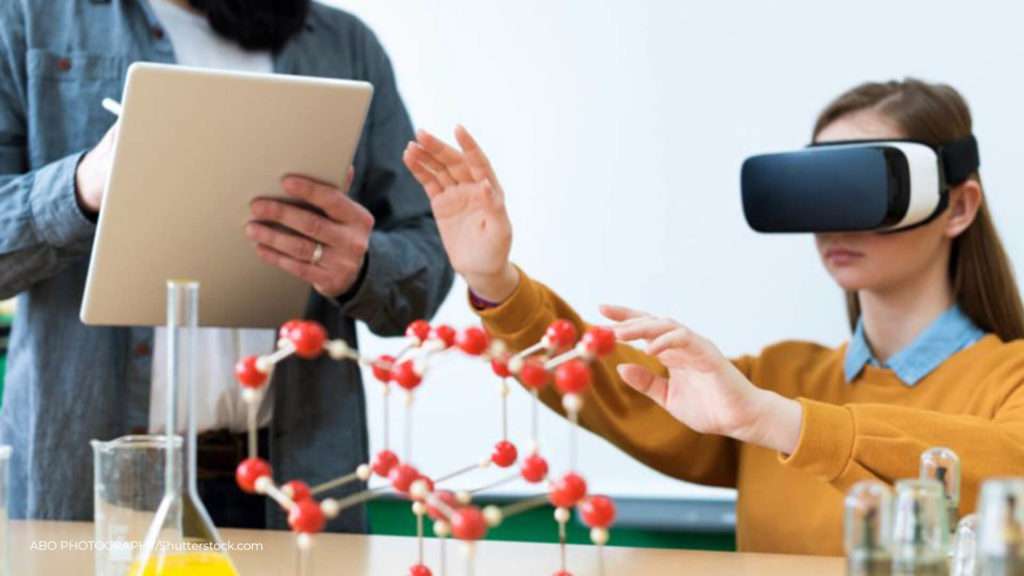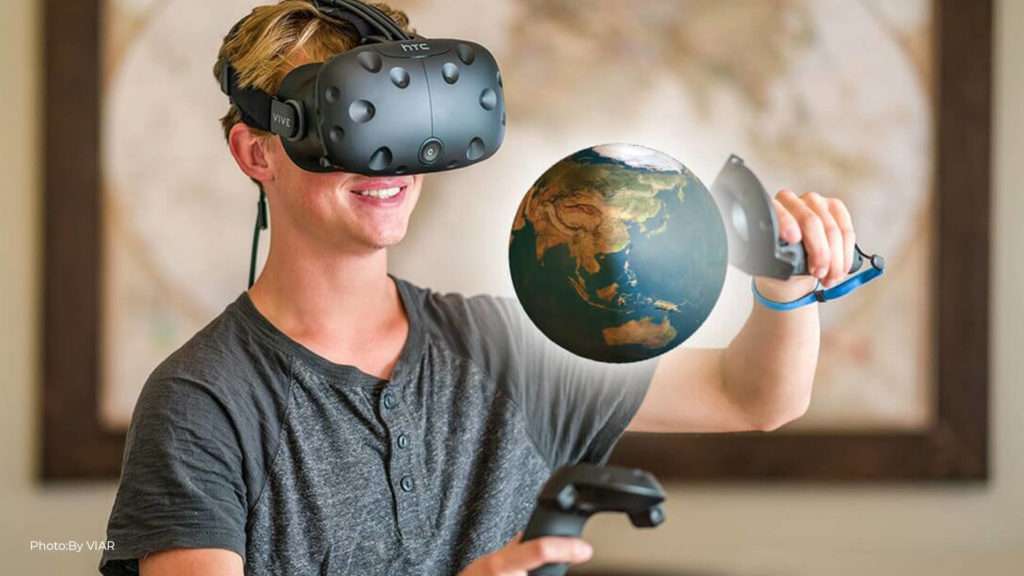VR in Education
VR in Education is Changing How We Learn and Teach
People are constantly searching for new ways to make knowledge transfer easier, quicker, and more effective. In the digital era, we have an opportunity to get better learning with technology. Virtual Reality (VR) is coming as the natural next step for the education evolution. In this text, we will show how virtual reality can transform the delivery of educational content.
How do we learn today?
Before computers, we had a powerful tool called books that helped us retain facts. Books became eBooks in the meantime. Today, we can use modern search engines and find all the answers to our questions with just a few clicks.
The current education approach has two significant problems:
It is based on the old format — fact retention. Teaching methods are focusing on providing facts; yet consuming a lot of information is not real learning. Being informed is not equal to being educated.
Too much information received quickly overwhelms those who learn, and as a result, learners become disengaged and bored.
What makes VR unique?
Immersion: When the experience is so compelling, we lose track of time.
Presence: Our mind and body are tricked into believing we are inside the virtual environment, and the brain responds as if we are there.
Empathy: We create a much deeper emotional connection than simply reading or hearing.
Benefits of VR in education
- VR is increasing knowledge area
- VR is providing an active experience, not just passive information
- VR is helping us understand complex concepts or theories
- There are no distractions while studying
- VR boosts students’ creativity
Benefits of active experience
Especially for tactile or visual learners, VR is bringing multiple methods to understand a subject. We are not only memorizing; we are allowing the brain to create associations among the subject and the environment we are in.
VR education is transforming how educational content is delivered; it allows us to see it and interact with it. It also means less cognitive load for processing the information.

Better sense of place
With VR, we aren’t limited to book illustrations or word descriptions. By exploring the topic, we can see how things are put together. VR experiences are not real, but a body believes it is in a new place. This feeling is remarkably helping the mind. Imagine learning about Rome, but being transported to Rome, fantastic.
Learning by doing
People learn best by doing, but in modern education, learners focus on reading instructions and not using them in practice. With VR education, we are inspired to discover for ourselves and get an opportunity to learn by doing and not just passively reading.
Distance learning
With VR, we don’t need to be “there”; it allows us to bridge the gap between learners and educators. VR puts educators and students in the same room— teachers can teleport into the virtual world and guide their students.
Emotional reaction and creativity
Learning with VR is different from anything we have ever done before. Experiences are so vivid; they cause a profound emotional reaction and therefore become memorable. VR has the potential to give a whole new perspective on people, things, and places. Imagine a student wondering inside a great artwork like Van Goghs „A Night Café”. Experiencing art that way becomes much more memorable. Virtual reality is also great for content creation. By giving learners powerful tools, you help them boost creativity.

Visual learning
Many people are visual learners — Virtual Reality is beneficial for this kind of learner. Instead of only reading about things, learners see things they are learning about. Visualizing mechanisms or complex things makes it easier for them to comprehend.
High tech training
VR is an excellent solution for hi-tech training fields like the medical industry. One of the most significant challenges for medical students is learning anatomy and understanding the body in 3D. VR education is helping overcome this problem.
Digitized Classroom Sessions
VR can also help teachers and learners gain classroom insights by recreating actual classroom sessions. By using 360-degree cameras, teachers are already begun creating detailed recordings of lessons. When a student misses a class, he can later use these VR recordings to be digitally transported into the classroom, see other students, and learn as if he was there.
Group learning
The essential knowledge we gain comes not from what we have heard from teachers but rather from collegiality. VR education is allowing us to make learning experiences social by enabling students to communicate with each other. Using mapped facial expressions and avatars, people can synthesize and learn from one another and discuss.

